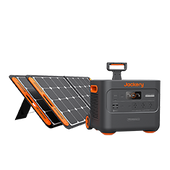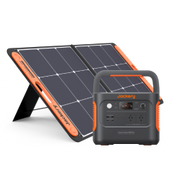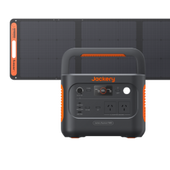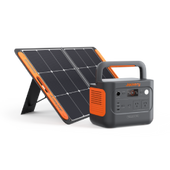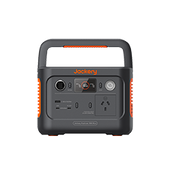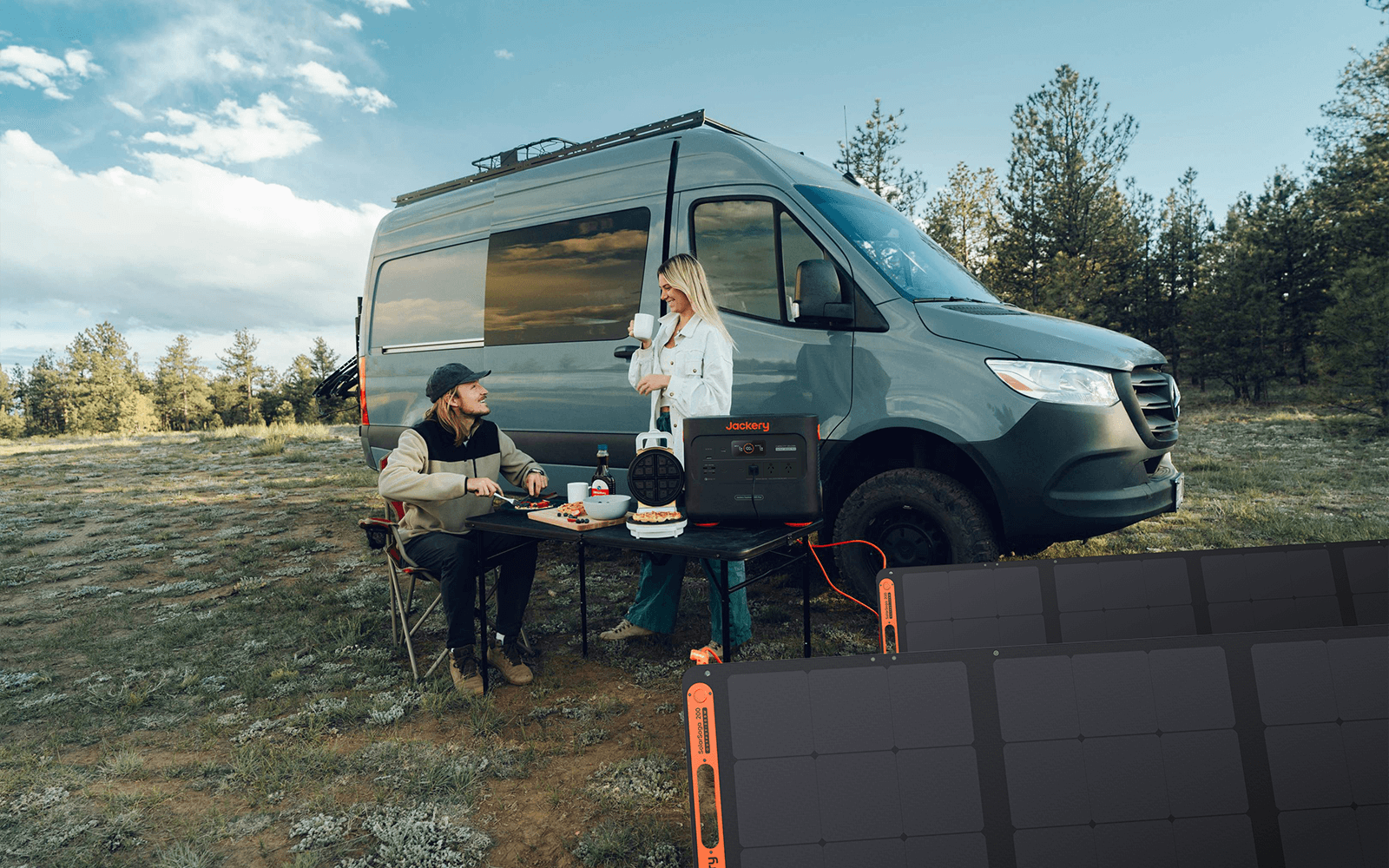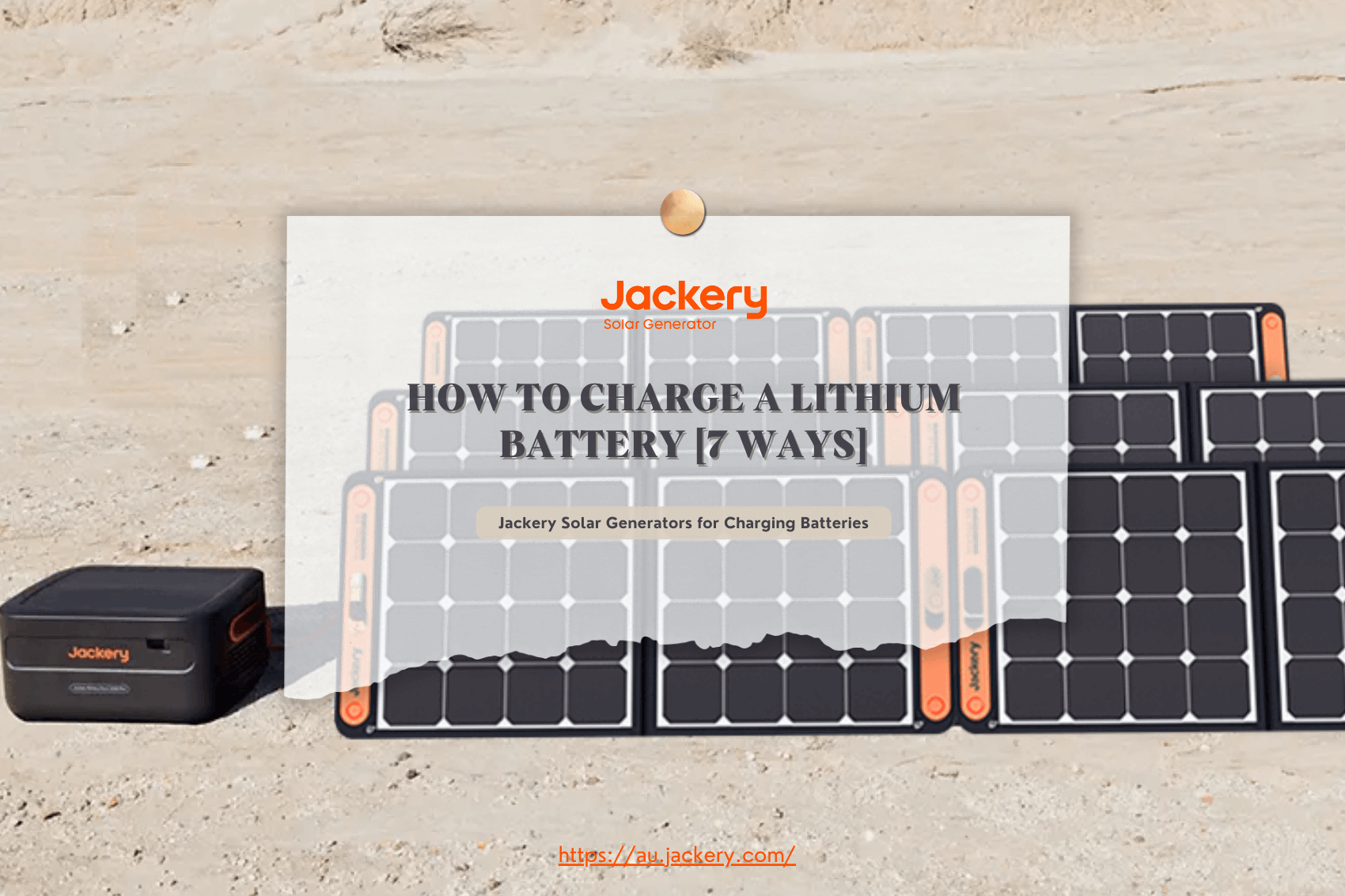Key Takeaways
· What Is an Amp? An amp is a unit measuring the flow of electric current.
· What is Volt? Volt is the measurement of the difference in electric potential between two points.
· Amps and Volts Relationship Amps, volts, and watts are related by the formula Watts = Volts x Amps.
· Jackery's Power Stations: It is a line of high-capacity solutions for the modern world's energy needs. Jackery Explorer 2000 Plus, 1000 Plus, and 600 Plus power solutions provide storage for outdoor and emergency uses.

What Is an Amp, Volt, and Watt?
1. What Is a Volt?
Voltage is the measure of electric potential difference. Volt denotes the energy potential that drives electrical charges through a conductor. It is almost analogous to the pressure that pushes water through a pipe. A typical AA battery, for example, generates about 1.5 volts, which allows it to function within small devices, such as clocks or remote controls. However, it determines the optimum performance of devices in the current energy delivered. The volt is also a category: either Current Electrical Flow - that which comes in through the home; or direct current, commonly found in batteries and portable devices. If you're unsure about electrical calculations, you can use a how many amps in a volt calculator to quickly determine the current by entering the power in watts and the voltage in volts.
2. What Is an Amp?
An amp (A) measures the flow rate of electric current in a circuit, quantifying how many electrons pass through a point each second. Higher amps indicate a stronger current, delivering more power to devices. For example, a hair dryer typically requires higher amperage compared to a smartphone charger. Analogous to the amount of water flowing through a pipe, amps determine the intensity of the electrical current. Devices requiring high amperage need thicker cables to prevent overheating. This understanding helps ensure systems are both efficient and safe, especially when designing circuits or selecting appropriate components. To determine how many amps are in a 12-volt battery, you need to know the battery's capacity, usually measured in amp-hours (Ah). When you do this calculation, you will also have access to information about how many amps are in a volt.
3. The Mathematical Relationship
Thus, volts, amps, and watts are all linked in their interaction in an electrical system. Mathematically, that relationship is expressed as the following:
Watts = Volts × Amps
So, when a 12-volt battery connects to a demanding 60-watt bulb, it readily calculates how much current will be seen by the bulb as follows:
Amps = Watts / Volts = 60It's12V = 5A
It could be used to define whether any devices would be compatible with the power source.
4. Power, Current, and Resistance
A complete grasp of volts and amps will not be possible without an understanding of how they work with power and instance:
· Power (Watts): The power is the energy rate used or produced, so a high-watt oven will take much more energy than that of a low-wattage LED.
· Current (Amps): It measures the flow of electricity in connection to the energy delivered into a circuit. Higher current often requires careful management to prevent overheating.
· Resistance (Ohms): Resistance, measured in ohms (Ω), opposes current flow in a circuit. High resistance reduces current, impacting device efficiency. For example, long or thin wires typically have higher resistance.
These fundamentals are summarized in Ohm's Law:
Voltage (V) = Current (I) × Resistance (R)
For example, if a circuOhm'slds 10V for voltage, and the resistance is 2Ω, then:
Current = Voltage / Resistance = 10V / 2Ω = 5A Thus, it may promise that a closer understanding of fundamentals will assure safety and efficiency in using electricity for everything from household setups to industrial applications.

How Many Amps in A Volt?
1. How to Convert Volts to Amps
The formula to convert volts to amps is:
· Amps = Watts / Volts
For instance, if a device has a 120-watt consumption at a voltage of 12V, it thus pulls 10 amps. This conversion is significant for sizing electrical components for many applications like solar setups or portable power configurations. The current drawn by a device is an important factor in achieving correct cable thickness, preventing overheating or running inefficiencies. For example, most smartphone chargers require 10 watts at 5 volts and therefore pull 2 amps. So, if you have a large appliance consuming 240 watts at 120 volts, in theory, it would need 2 amps. Such calculations are elementary when designing electrical systems to be safe and efficient. After the converting period, we also know how many amps are in a volt.
|
Voltage |
Current (Amps) |
Power (Watts) |
|
5V |
1A |
5W |
|
5V |
2A |
10W |
|
12V |
1A |
12W |
|
12V |
2A |
24W |
|
24V |
1A |
24W |
|
24V |
2A |
48W |
2. Conversion Chart
Understanding the interrelationship voltage and current (amps) have with power (watts) makes the conversion chart a viable tool. The conversion would help shorten load calculations, enabling instant identification of amperage or wattage requirements for particular voltages.

How Many Volts in An Amp?
1. How to Convert Amps to Volts
The formula to calculate volts from amps is:
· Volts = Watts / Amps
For example, a device drawing 200 watts at 10 amps will require 20 volts using this formula. It is an important formula in electrical systems for checking compatibility in the working of a device with the power sources. By calculating voltage, it can be said whether the device would run safely on that respective circuit. For example, it will take around 150 volts for proper functioning of a heavy-duty appliance that draws 1,500-watt power on 10 amperes. On the other hand, a little smaller appliance, drawing 50 watts at 5 amps, consumes only 10 volts. This knowledge is very important in the best utilization of energy distribution setups at home, on the go, or on an off-grid basis.
2. Conversion Chart
|
Current (Amps) |
Voltage |
Power (Watts) |
|
1A |
10V |
10W |
|
2A |
10V |
20W |
|
1A |
20V |
20W |
|
2A |
20V |
40W |
Conversion charts are used to quickly grasp all the relationships between voltage, current, and power. Users can find what amperage or wattage needs to be used for given voltage values by consulting the conversion chart posted in the room. This ensures reliable calculations both at home and in the event of consulting professionals.
Jackery Portable Power Stations Explained
You can rely on portable power stations as they bring extreme convenience into your home and outdoor life. When the power goes out, the portable power station supplies essential electrical assistance to keep your household lights and medical tools running. Outside, they run all your cooking gear and electronic devices while keeping your connection to modern power sources intact anywhere you go. Their eco-friendly performance cuts back on fossil fuel usage to support sustainable practices in both indoor and outdoor spaces.
Introduce Jackery Solar Generators
Jackery Solar Generators "go to the next level" concerning energy independence, as they have high-efficiency solar panels that store energy in advanced lithium-ion batteries. These devices are green, clean, and renewable, perfect for off-grid power. They have lightweight portability and easy setup, making them great for camping, outdoor events, or long-term off-grid living.
With Jackery Solar Generators, you can charge multiple devices simultaneously, from cell phones to kitchen appliances, ensuring uninterrupted functionality. Jackery Solar Generators suit beginners and experienced users because of their simple interfaces and user-friendly constructions.
Jackery Explorer 2000 Plus Portable Power Station
Features:
· Capacity: 2,042Wh
· Expandable capacity of up to 12kWh. Supports up to 5 add-on battery packs (sold separately).
· Battery: LiFePO4 battery
· Cycle Life: 4,000+ cycles
· Recharge Methods: Solar, wall, and car charging
· Output Ports: AC, USB, and DC

Customer Review: I took this power station on a week-long camping trip in remote areas and was impressed with its performance. It consistently powered my portable fridge and lights, ensuring a hassle-free experience in the wilderness.
Jackery Explorer 1000 Plus Portable Power Station
Features:
· Capacity: 1,264Wh
· Expandable capacity of up to 5kWh Supports up to 3 add-on battery packs (sold separately).
· Battery: LiFePO4 battery
· Cycle Life: 4,000+ cycles
· Recharge Methods: Solar, wall, and car charging
· Output Ports: AC, USB, and DC

Customer Review: George Z. "As a frequent traveller, I used this p "wer station for my remote work sessions in a countryside cabin. It was compact and perfect for short camping trips, reliably powering my laptop and other essential gadgets without any interruptions. I highly recommend it!"
Jackery Explorer 600 Plus Portable Power Station
Features:
· Capacity: 632Wh
· Battery: LiFePO4 battery
· Cycle Life: 4000+ cycles
· Recharge Methods: Solar, wall, and car charging
· Output Ports: AC, USB, and DC

Advantages
This Lightweight Power Station is DlightweightOffer Maximum Versatility. The Jackery Explorer 600 Plus boasts compact size and lightweight portability, which are perfect for camping, remote work travel, or small emergency use power needs. It's designed to support all types of charging options, ensuring a steady supply of energy anywhere on this planet.
Who Needs This Generator?
This portable generator should be highly suitable for outdoor campers or "digital nomads" who travel regularly but still require a steady source of power. It is quite useful for those living in areas where power cuts often occur, or portable energy sources are needed for recreational or work purposes.
Where Can It Be Used?
Jackery Explorer 600 Plus accompanies you on camping trips. The gadget works from anywhere, be it outdoors or indoors. What more would you have left? Although you may want to complete that job, at some point, you will need emergency backup power within the home.
Customer Review: Frand D. "I use this power station primarily for travel and remote work. It's incredibly lightweight and easy to carry, making it perfect for charging my laptop, phone, and small devices during my trips or while working in outdoor settings."
How Many Amps in A Volt FAQs
1. Is 1 Volt 1 Amp?
No, 1 volt and 1 amp measure different properties. Their relationship depends on the power (watts).
2. What Is 20 Amp in Volts?
The power determines. For instance, if the gadget is powered by 200 watts, the voltage will be 10V.
3. How Big of a Power Station Do I Need?
The calculation goes like this: Working Hours = Capacity (Wh) / Device Power (W). As in, Jackery Explorer 2000 Plus can power a 100W device for about 20 hours.
4. How Many Amps Are in 240 Volts?
So, Amps = Watts / Volts. The current shall be 10 amps for a circuit of 240V with 2,400 watts.
5. What Is 2000W in Amps?
Amps = Watts / Volts. At 240V, 2,000W equals 8.33 amps.
Final Thoughts
An understanding of how to determine how many amps in a volt becomes very critical in the efficient and safe usage of electrical appliances. The knowledge of this basic concept, in turn, makes energy management every day and off-grid usage by ensuring devices that would have otherwise given trouble run smoothly.
Jackery, for instance, boasts portable power solutions in the form of the Explorer 2000 Plus, which is a perfect example of a reliable solution to throw in those new-age energy needs. With your innovative and eco-friendly designs, they are well-suited to a wide range of applications powering your home appliances to gearing you up for outdoor adventures. With such an understanding of amps and volts, whether you are preparing for a blackout or going on a camping trip, you can make better and more effective decisions concerning your energy solutions.

